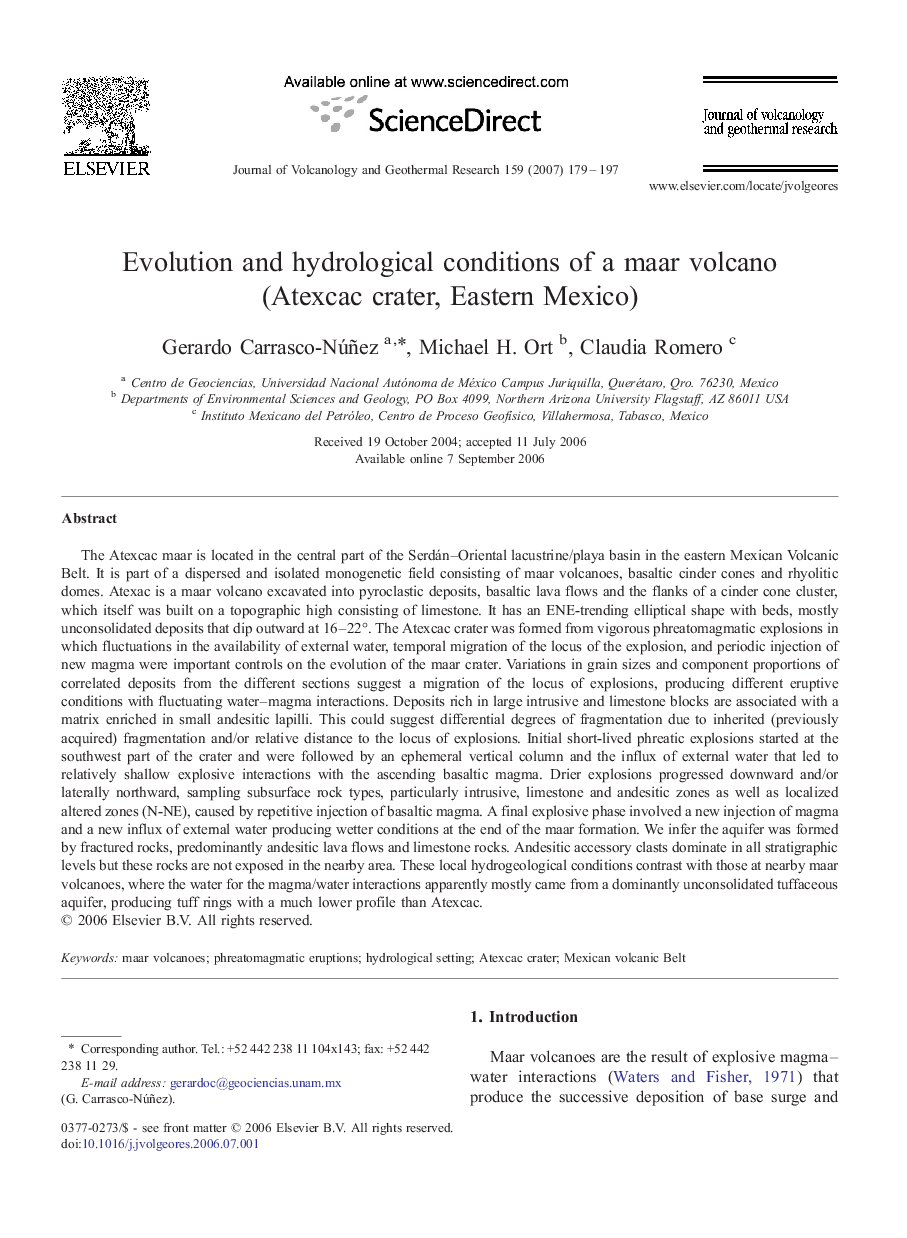| کد مقاله | کد نشریه | سال انتشار | مقاله انگلیسی | نسخه تمام متن |
|---|---|---|---|---|
| 4714115 | 1638469 | 2007 | 19 صفحه PDF | دانلود رایگان |

The Atexcac maar is located in the central part of the Serdán–Oriental lacustrine/playa basin in the eastern Mexican Volcanic Belt. It is part of a dispersed and isolated monogenetic field consisting of maar volcanoes, basaltic cinder cones and rhyolitic domes. Atexac is a maar volcano excavated into pyroclastic deposits, basaltic lava flows and the flanks of a cinder cone cluster, which itself was built on a topographic high consisting of limestone. It has an ENE-trending elliptical shape with beds, mostly unconsolidated deposits that dip outward at 16–22°. The Atexcac crater was formed from vigorous phreatomagmatic explosions in which fluctuations in the availability of external water, temporal migration of the locus of the explosion, and periodic injection of new magma were important controls on the evolution of the maar crater. Variations in grain sizes and component proportions of correlated deposits from the different sections suggest a migration of the locus of explosions, producing different eruptive conditions with fluctuating water–magma interactions. Deposits rich in large intrusive and limestone blocks are associated with a matrix enriched in small andesitic lapilli. This could suggest differential degrees of fragmentation due to inherited (previously acquired) fragmentation and/or relative distance to the locus of explosions. Initial short-lived phreatic explosions started at the southwest part of the crater and were followed by an ephemeral vertical column and the influx of external water that led to relatively shallow explosive interactions with the ascending basaltic magma. Drier explosions progressed downward and/or laterally northward, sampling subsurface rock types, particularly intrusive, limestone and andesitic zones as well as localized altered zones (N-NE), caused by repetitive injection of basaltic magma. A final explosive phase involved a new injection of magma and a new influx of external water producing wetter conditions at the end of the maar formation. We infer the aquifer was formed by fractured rocks, predominantly andesitic lava flows and limestone rocks. Andesitic accessory clasts dominate in all stratigraphic levels but these rocks are not exposed in the nearby area. These local hydrogeological conditions contrast with those at nearby maar volcanoes, where the water for the magma/water interactions apparently mostly came from a dominantly unconsolidated tuffaceous aquifer, producing tuff rings with a much lower profile than Atexcac.
Journal: Journal of Volcanology and Geothermal Research - Volume 159, Issues 1–3, 1 January 2007, Pages 179–197